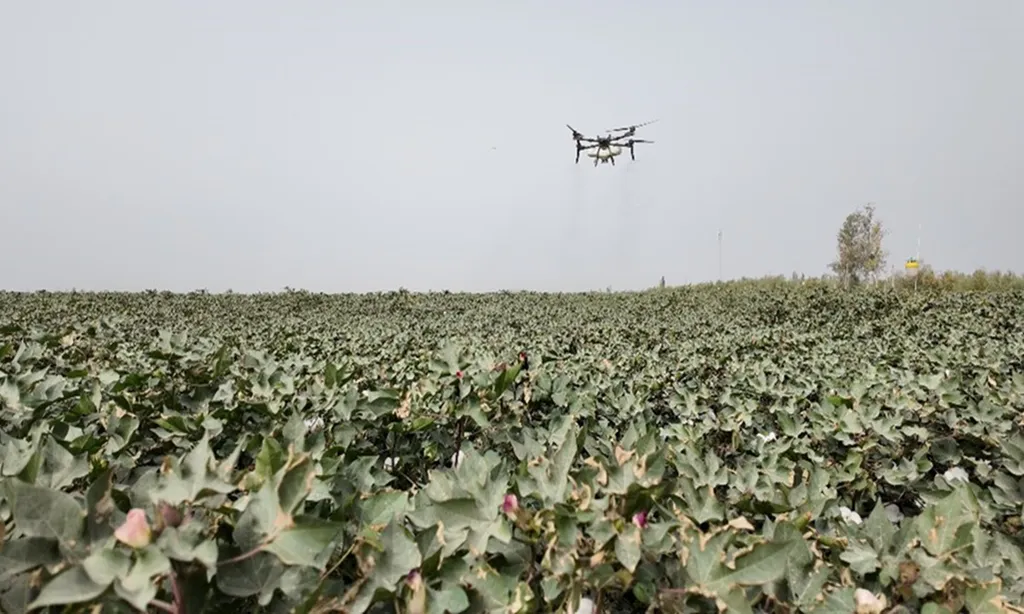In the heart of Xinjiang, China, a groundbreaking study led by Fangyin Wang from the College of Hydraulic and Civil Engineering at Xinjiang Agricultural University is revolutionizing cotton irrigation strategies. The research, published in the journal *Agriculture* (translated from Chinese), focuses on optimizing irrigation scheduling using a sophisticated blend of the AquaCrop model, UAV remote sensing, and Particle Swarm Optimization (PSO). This innovative approach promises to mitigate the adverse effects of extreme weather conditions, ensuring sustainable agricultural development and addressing global food demand.
The study conducted two years of field experiments in cotton fields, evaluating the impact of irrigation intervals and drip irrigation frequency on cotton growth dynamics and yield. The findings are nothing short of transformative. “By integrating dynamic crop growth monitoring and accurate yield estimation, we can significantly improve irrigation strategies,” Wang explains. The research identified key parameters such as the canopy growth coefficient (CGC), maximum canopy cover (CCX), and canopy cover at 90% emergence (CCS) as crucial for simulating canopy cover (CC). For aboveground biomass (AGB) simulation, the crop coefficient at full canopy (KCTRX), water productivity (WP), and CGC were found to be most sensitive.
One of the most compelling aspects of this study is the use of ridge regression models that integrate multiple vegetation indices. These models outperformed single-index models in estimating CC and AGB across different growth stages, achieving impressive R² values of 0.73 and 0.87, respectively. “Assimilating both CC and AGB as dual-state variables significantly improved the model’s predictive accuracy for cotton yield,” Wang notes. The results were staggering, with R² values of 0.96 and 0.95 in 2023 and 2024, respectively.
The study’s scenario simulations revealed optimal irrigation quotas for different climatic conditions: 520 mm for dry years, 420 mm for normal years, and 420 mm for wet years, with a consistent irrigation interval of five days. These findings provide invaluable theoretical insights and practical guidance for irrigation scheduling, yield prediction, and smart irrigation management in drip-irrigated cotton fields.
The implications of this research extend far beyond the cotton fields of Xinjiang. In an era where extreme climatic events are becoming increasingly frequent, the ability to optimize irrigation strategies is crucial for ensuring food security and promoting sustainable agricultural practices. The integration of UAV remote sensing and advanced modeling techniques offers a blueprint for future developments in precision agriculture. As the global population continues to grow, the demand for efficient and sustainable agricultural practices will only increase. This study not only addresses these challenges but also paves the way for innovative solutions in the energy sector, particularly in water management and resource optimization.
In conclusion, Fangyin Wang’s research represents a significant leap forward in the field of agritech. By harnessing the power of advanced modeling and remote sensing technologies, this study offers a robust framework for optimizing irrigation strategies and ensuring sustainable agricultural development. As the world grapples with the impacts of climate change, the insights gained from this research will be invaluable in shaping the future of agriculture and energy management.

